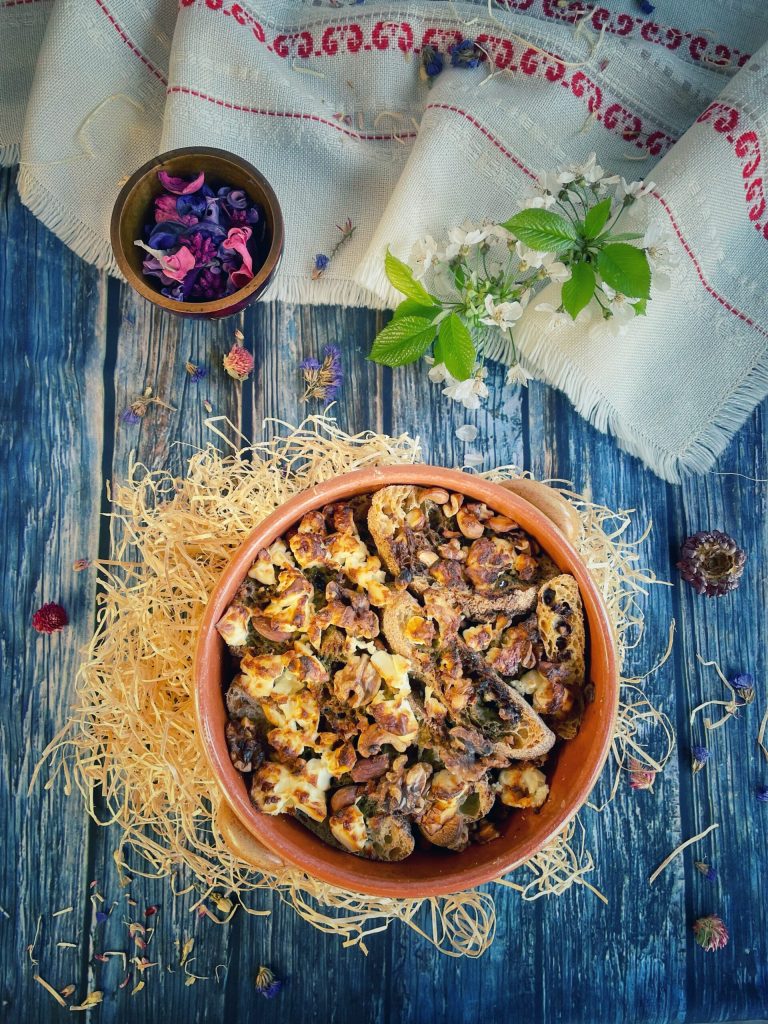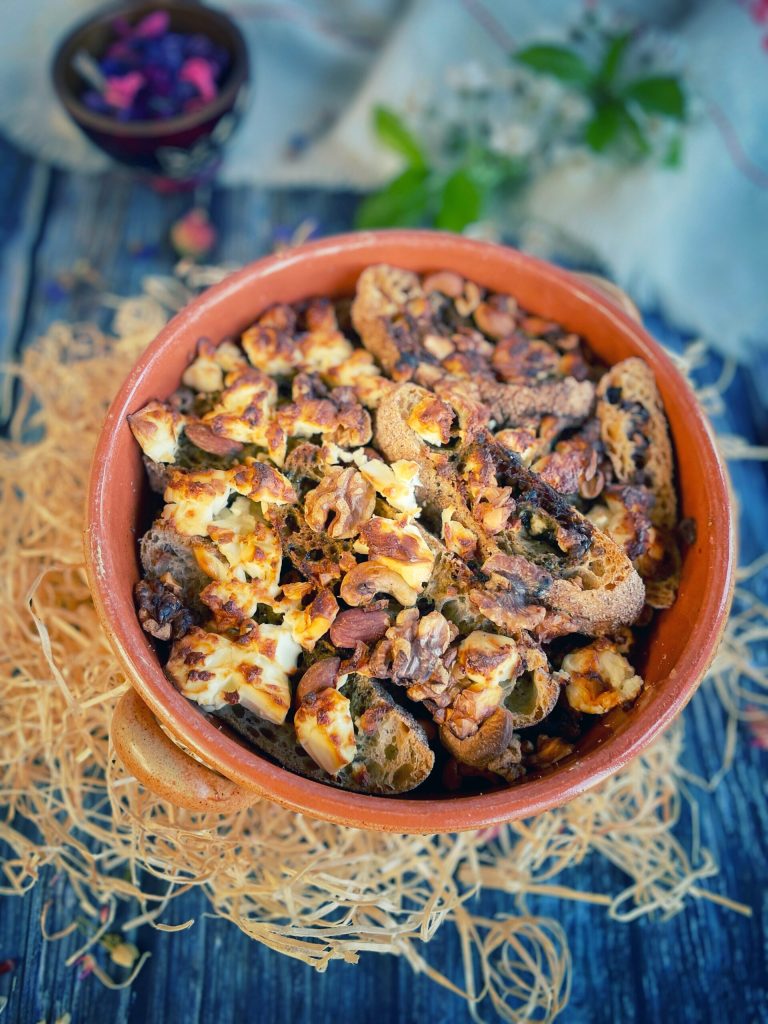Capitorada, or Capilotade, or Capirotada de vigilia, is a traditional Mexican dish prepared during Lent, especially for Good Friday.
Similar to bread pudding, it is enriched with a variety of ingredients such as dried fruit, sugar, spices, and sometimes cheese.
Each region of Mexico has its version, but the basic recipe generally includes: stale bread, piloncillo, cinnamon, raisins, peanuts, and aged Mexican cheese made from cow’s milk named after the city of Cotija, Michoacán.
A toasted bolillo (similar to the French baguette) and soaked in a warm syrup made of unrefined cane sugar, known as piloncillo, cloves, and cinnamon.
Some versions also include fruits such as apples, dates, apricots, and bananas.
Legend has it that the dish, formally known as capirotada de vigilia, was created to use leftovers before the start of Lent.
The word “capirotada” comes from the Spanish word “capirote,” which refers to the high, conical hat in a religious context.
In the video, I made a version with syrup enriched with spirulina, cooked in an air fryer.

- Difficulty: Easy
- Cost: Cheap
- Preparation time: 10 Minutes
- Portions: 4 People
- Cooking methods: Oven, Stovetop
- Cuisine: Mexican
- Seasonality: Easter
Ingredients
- 2 bolillo (8-10 slices of stale bread (preferably baguette type))
- 300 g piloncillo
- 750 ml water (or milk)
- 80 g raisins
- 100 g mixed nuts
- 50 g peanuts (or nuts)
- 150 g cotija (or feta)
- to taste cinnamon
- to taste butter
Steps
Preparing the bread:
Cut the bread into slices about 0.8 inches thick. If the bread is very fresh, toast it a bit in the oven or on the grill to make it crispy.
Preparing the syrup:
In a pot, add the water (or milk) with the sugar, cloves, and cinnamon. Bring to a boil and let simmer for about 5-10 minutes until the sugar completely dissolves.
If you use milk, the flavor will be richer and creamier.
Grease a baking pan with butter. Make a layer of bread slices at the bottom of the pan. Add some raisins, almonds, walnuts, and fresh cheese if using.
Repeat the process until you finish the ingredients, alternating bread with nuts and cheese.
Pour the sweet syrup over the bread and other ingredients in the pan, ensuring the bread is well-soaked.
Cover the pan with a sheet of aluminum foil and bake at 356°F for about 30 minutes.
After 30 minutes, remove the aluminum foil and continue baking for another 10-15 minutes until the top becomes golden and crispy.
Let it cool for a few minutes before serving. The capirotada can be enjoyed warm or at room temperature and keeps well for a couple of days
You can buy the air fryer that you can purchase on the COSORI website with a 15% discount and the Spirulina on the Ethos Sustainable website with a 10% discount using the code 🛑SELENE10 🛑 or by clicking directly HERE.
FAQ (Questions and Answers)
What cheese can I use instead of cotija?
To replace fresh Mexican cheese like Cotija in capirotada, you can opt for cheeses with a similar texture, even if the flavor won’t be identical.
Here are some alternatives:
ricotta salata: has a denser texture and slightly salty flavor, making it a good alternative to Cotija. You can grate it over the capirotada to add a touch of salty flavor.
Feta: has a salty flavor and a crumbly texture similar to Cotija.
Pecorino: Sardinian or Roman would be a great substitute, although it may be more flavorful than Cotija.
Grana Padano or Parmesan Reggiano: grated can be used in small amounts to add a slight saltiness, but they are more aged compared to Cotija. Use should be moderate to avoid overpowering other flavors.
Buffalo mozzarella (less salty): can be an interesting choice for a contrast of textures in the capirotada.
How to use them:
The cheese should be grated or crumbled over the capirotada during baking, just like Cotija, to melt or brown on the surfaceWhat is the history of capirotada?
The dish traveled to the New World with the Spanish conquistadors, who spread both the Catholic religion and Spanish culture among the indigenous populations.
In post-conquest Mexico, indigenous populations like the Aztecs used anise tea to soften stale bread and moisten dried meat, both common problems on Spanish ships crossing the Atlantic.
Originally a more savory dish, capirotada gradually became sweeter after New World ingredients and indigenous traditions were combined with the existing Spanish version, leading to a great increase in varieties of capirotada.
Although it was originally consumed before Lent, capirotada is now also consumed during it, especially during Holy Week and Good Friday.
Recently, it has been attributed a spiritual significance related to the passion of Christ and Lent, so for many people, the bread represents the Body of Christ, the syrup is his blood, the cloves are the nails of the cross, and whole cinnamon sticks are the wood of the cross.
Melted cheese represents the Holy Shroud.

